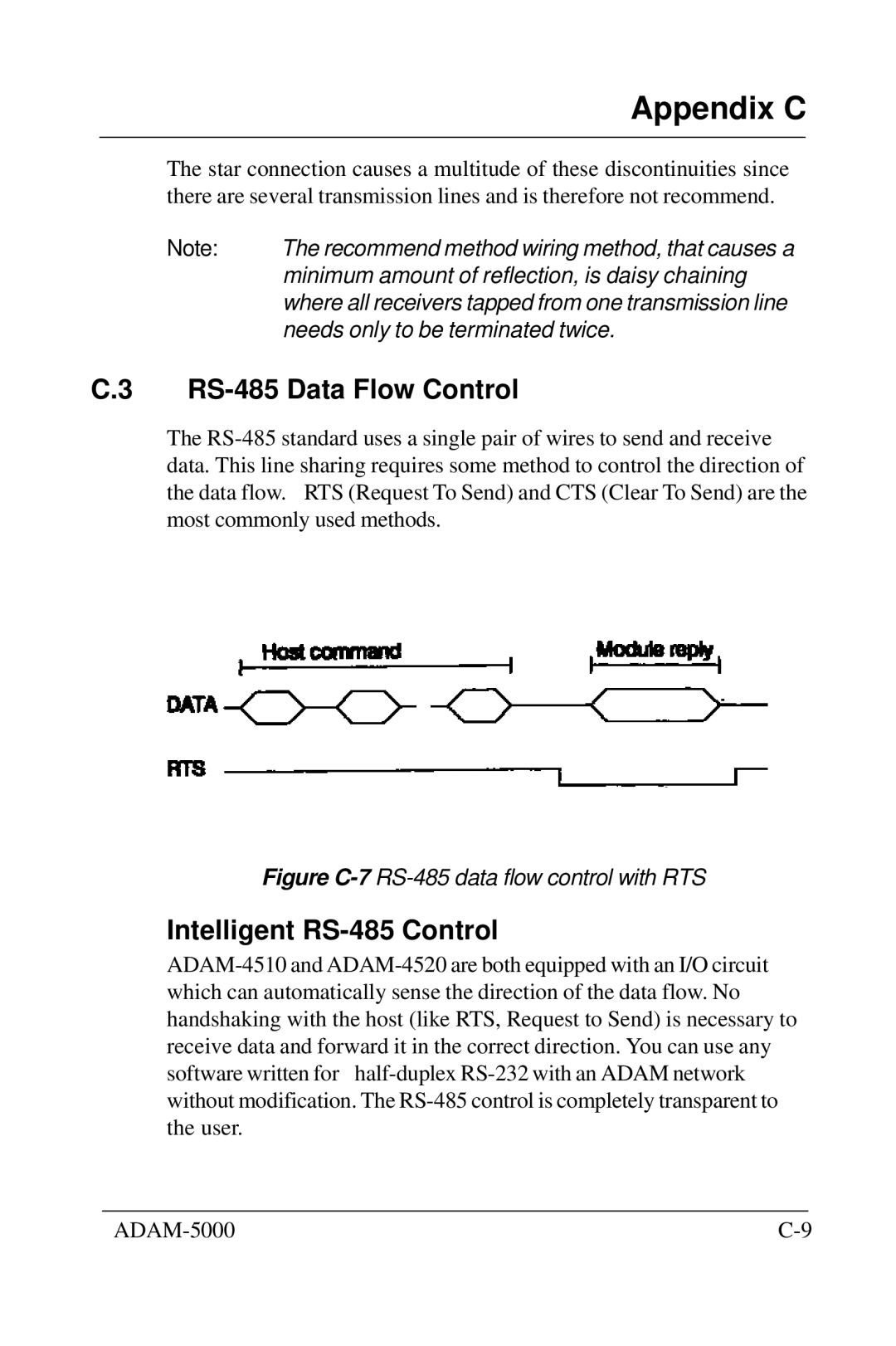Appendix C
The star connection causes a multitude of these discontinuities since there are several transmission lines and is therefore not recommend.
Note: The recommend method wiring method, that causes a minimum amount of reflection, is daisy chaining where all receivers tapped from one transmission line needs only to be terminated twice.
C.3 RS-485 Data Flow Control
The RS-485 standard uses a single pair of wires to send and receive data. This line sharing requires some method to control the direction of the data flow. RTS (Request To Send) and CTS (Clear To Send) are the most commonly used methods.
Figure C-7RS-485 data flow control with RTS
Intelligent RS-485 Control
ADAM-4510 and ADAM-4520 are both equipped with an I/O circuit which can automatically sense the direction of the data flow. No handshaking with the host (like RTS, Request to Send) is necessary to receive data and forward it in the correct direction. You can use any software written for half-duplex RS-232 with an ADAM network without modification. The RS-485 control is completely transparent to the user.

